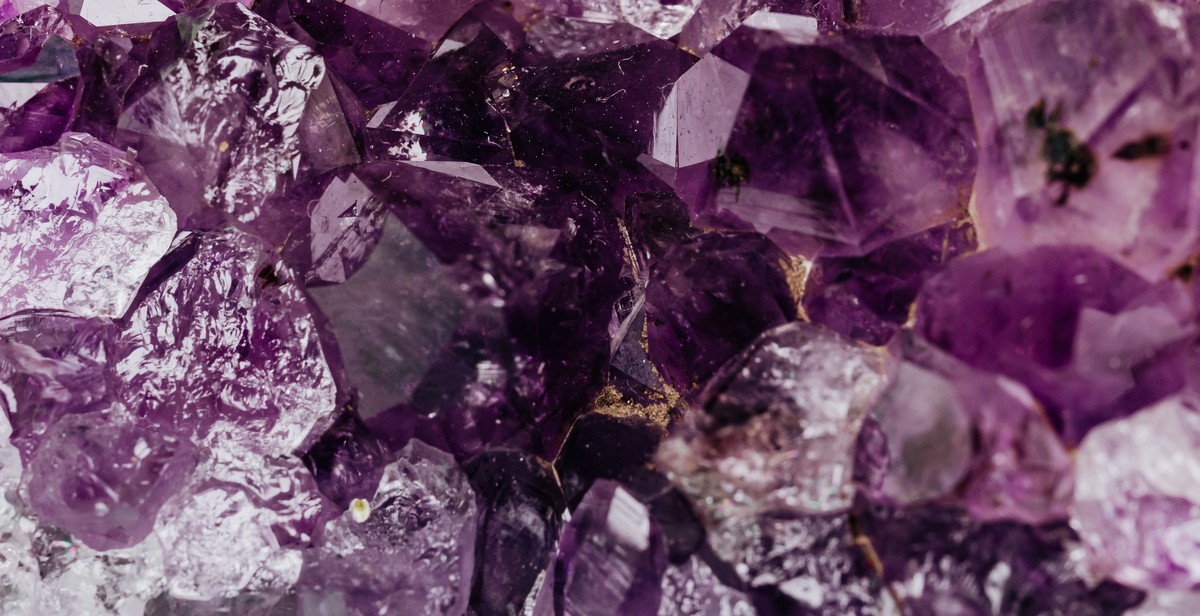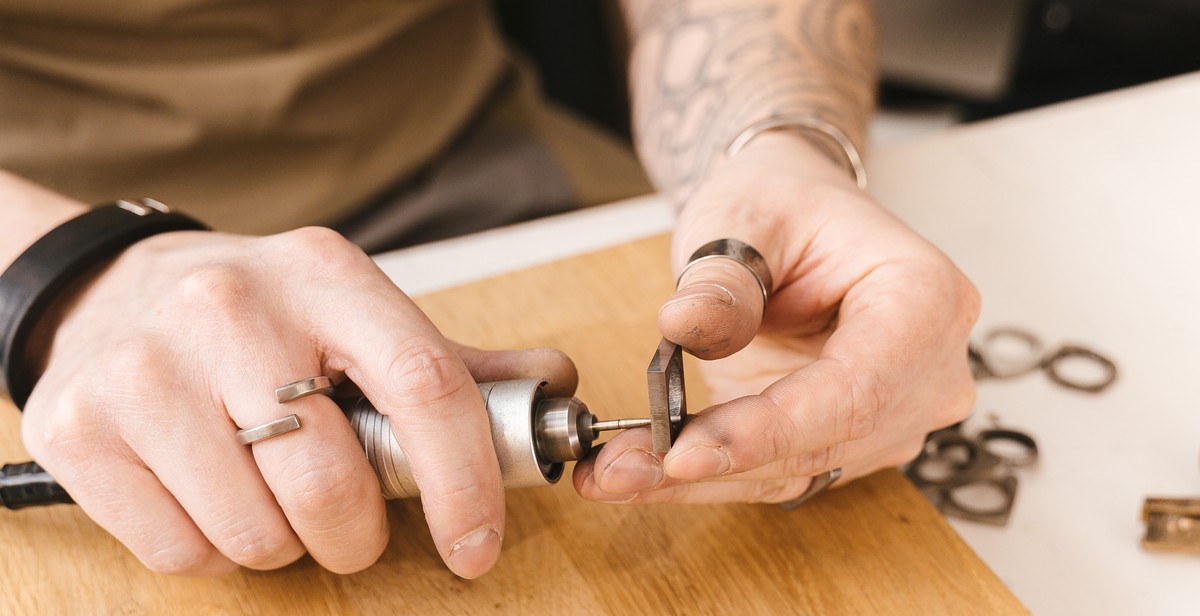The Rise of Sustainable and Ethical Jewelry Brands
Jewelry has always been a symbol of luxury and status. However, in recent years, consumers have become more conscious about the environmental and social impact of their purchases. This has led to the rise of sustainable and ethical jewelry brands.
What is sustainable and ethical jewelry?
Sustainable jewelry refers to pieces that are made using environmentally friendly materials and production methods. This includes using recycled metals and gemstones, as well as minimizing waste and reducing carbon emissions.
Ethical jewelry, on the other hand, refers to pieces that are made without exploiting workers or harming animals. This includes using fair labor practices, supporting local communities, and avoiding the use of conflict minerals.
Why is sustainable and ethical jewelry important?
The jewelry industry has a significant impact on the environment and human rights. Mining for precious metals and gemstones can lead to deforestation, water pollution, and displacement of local communities. Additionally, many workers in the industry are paid low wages and work in unsafe conditions.
By supporting sustainable and ethical jewelry brands, consumers can make a positive impact on the environment and society. These brands prioritize transparency and accountability, ensuring that their products are made with integrity and respect for people and the planet.

The Environmental Impact of Traditional Jewelry Production
Traditional jewelry production methods have a significant environmental impact, primarily due to the mining and extraction processes involved. The extraction of minerals and precious metals requires large amounts of energy and resources, leading to deforestation, soil erosion, and habitat destruction. Additionally, the use of toxic chemicals such as cyanide and mercury in the extraction process can contaminate soil and water sources, posing a serious threat to human health and the environment.
Mining and Extraction Processes
The mining and extraction of precious metals such as gold, silver, and diamonds can have a devastating impact on the environment. Open-pit mining, which involves removing large amounts of earth to access minerals, can cause soil erosion, deforestation, and habitat destruction. This process also generates large amounts of waste, which can contaminate water sources and harm wildlife.
Furthermore, the use of toxic chemicals such as cyanide and mercury in the extraction process can have serious environmental and health impacts. These chemicals can contaminate water sources and cause long-term damage to ecosystems and human health.
Water and Air Pollution
Traditional jewelry production also contributes to water and air pollution. The use of toxic chemicals in the extraction process can contaminate water sources, making them unsafe for human consumption and harming wildlife. Additionally, the production of jewelry often involves the use of large amounts of water, which can strain local water resources and exacerbate water scarcity in already water-stressed regions.
The production of jewelry also contributes to air pollution, primarily through the burning of fossil fuels to power mining equipment and transport materials. This can lead to increased greenhouse gas emissions and contribute to climate change.
| Environmental Impact | Traditional Jewelry Production |
|---|---|
| Mining and Extraction Processes | Deforestation, soil erosion, habitat destruction, and contamination of soil and water sources |
| Water Pollution | Contamination of water sources and strain on local water resources |
| Air Pollution | Increased greenhouse gas emissions and contribution to climate change |

The Social Impact of Traditional Jewelry Production
Traditional jewelry production has a significant social impact on the communities involved in the process. Unfortunately, the impact is not always positive, and many ethical concerns arise from the industry. Two of the most significant issues are child labor and exploitation of artisanal miners.
Child Labor and Exploitation
Child labor is a pervasive issue in traditional jewelry production. Children are often forced to work in mines or factories to help support their families. According to the International Labour Organization, there are approximately 152 million child laborers worldwide, with many working in hazardous conditions.
The jewelry industry is not immune to this problem, and many children are exploited in mines and factories to extract precious metals and stones. Children as young as six years old are forced to work long hours, often in dangerous conditions, and for little pay. This practice is not only morally reprehensible, but it also violates international labor laws.
Exploitation of Artisanal Miners
Artisanal mining is a crucial part of traditional jewelry production, but it is also a source of exploitation. Artisanal miners work in small-scale mines, often in developing countries, and are often subject to unsafe working conditions and low pay. According to the World Bank, there are approximately 100 million artisanal miners worldwide, many of whom work in hazardous conditions.
Artisanal miners are also vulnerable to exploitation by middlemen and traders who pay them low prices for their products. This exploitation often leads to poverty and environmental degradation, as miners are forced to extract resources at a faster rate to make up for their low wages.
| Issues | Impact |
|---|---|
| Child labor | Exploitation of children, hazardous working conditions, violation of labor laws |
| Exploitation of artisanal miners | Unsafe working conditions, low pay, poverty, environmental degradation |
Overall, the social impact of traditional jewelry production is complex, and it is essential to address the ethical concerns surrounding the industry. Sustainable and ethical jewelry brands are working to combat these issues by sourcing materials responsibly and ensuring fair labor practices throughout the production process.

The Rise of Sustainable and Ethical Jewelry Brands
Jewelry has always been considered a luxury item, but the industry has long been plagued by issues of environmental degradation, human rights violations, and unethical labor practices. However, in recent years, there has been a significant shift towards sustainable and ethical jewelry brands.
The Need for Change
The jewelry industry is notorious for its negative environmental impact. The mining and extraction of precious metals and gems have led to deforestation, water pollution, and soil erosion. In addition, the industry has been criticized for its use of child labor and exploitation of miners and workers in developing countries.
Consumers are becoming increasingly aware of these issues and are demanding change. They want to know the story behind their jewelry, where it comes from, and who made it. This has led to a rise in sustainable and ethical jewelry brands that focus on transparency, responsible sourcing, and ethical production practices.
The Growth of Sustainable and Ethical Jewelry Brands
Sustainable and ethical jewelry brands are on the rise, and they are gaining popularity among consumers who value transparency and sustainability. These brands are committed to using recycled metals, responsibly sourced gems, and ethical labor practices. They are also transparent about their supply chain, allowing consumers to trace the journey of their jewelry from mine to market.
Some sustainable and ethical jewelry brands also support social and environmental causes, such as supporting artisanal miners and investing in community development projects. These brands are not only creating beautiful and unique pieces of jewelry, but they are also making a positive impact on the world.
As consumers become more conscious of the impact of their purchases, the demand for sustainable and ethical jewelry brands will continue to grow. The rise of these brands is a positive step towards a more responsible and sustainable future for the jewelry industry.

Sustainable and Ethical Jewelry Production
As consumers become more aware of the environmental and social impact of their purchases, sustainable and ethical jewelry brands are on the rise. These brands are committed to using recycled metals and gemstones, as well as fair trade and ethical sourcing, to minimize their impact on the planet and support the communities they work with.
Recycled Metals and Gemstones
Many sustainable jewelry brands use recycled metals such as gold and silver. These metals are reclaimed from old jewelry, electronics, and other sources, reducing the need for environmentally damaging mining practices. In addition, recycled metals require less energy to produce than newly mined metals, further reducing their environmental impact.
In addition to recycled metals, sustainable jewelry brands also use ethically sourced gemstones. These gemstones are either recycled from vintage jewelry or sourced from mines that adhere to strict environmental and social standards. By using recycled or ethically sourced gemstones, these brands are able to minimize the negative impact of their jewelry production on the planet.
Fair Trade and Ethical Sourcing
Another important aspect of sustainable and ethical jewelry production is fair trade and ethical sourcing. This means that the materials used in jewelry production are sourced in a way that is fair to the workers and communities involved. This includes paying fair wages, ensuring safe working conditions, and supporting local economies.
Many sustainable jewelry brands work directly with small-scale artisanal miners and gemstone cutters, providing them with fair wages and working conditions. By supporting these communities, sustainable jewelry brands are able to promote economic development and social justice.
| Benefits of Sustainable and Ethical Jewelry Production |
|---|
| Reduces the negative environmental impact of jewelry production |
| Supports small-scale artisanal miners and gemstone cutters |
| Promotes economic development and social justice |
| Provides consumers with a more ethical and sustainable option |
Overall, sustainable and ethical jewelry production is an important trend in the jewelry industry. By using recycled metals and gemstones and supporting fair trade and ethical sourcing, these brands are able to minimize their impact on the planet and support the communities they work with.

The Benefits of Sustainable and Ethical Jewelry
Sustainable and ethical jewelry is becoming increasingly popular as people become more aware of the environmental and social impact of the jewelry industry. Here are some of the benefits of choosing sustainable and ethical jewelry:
Environmental Benefits
- Reduced Carbon Footprint: Sustainable jewelry brands use eco-friendly materials and production processes, which significantly reduces the carbon footprint of the jewelry industry.
- Less Pollution: Ethical jewelry brands are committed to minimizing the environmental impact of their operations by using non-toxic materials and reducing waste.
- Conservation of Natural Resources: Sustainable jewelry brands use recycled metals and ethically sourced gemstones, which helps to conserve natural resources and reduce the negative impact of mining.
Social Benefits
- Fair Wages and Working Conditions: Ethical jewelry brands prioritize fair wages and safe working conditions for their employees, which helps to improve the livelihoods of workers in the industry.
- Support for Local Communities: Some sustainable jewelry brands source their materials from local communities, which helps to support small businesses and promote economic development.
- Transparency and Accountability: Ethical jewelry brands are committed to transparency and accountability in their operations, which helps to build trust with consumers and promote ethical practices in the industry.
| Overall, choosing sustainable and ethical jewelry is a responsible and conscious decision that benefits both the environment and society. |

Conclusion
The jewelry industry has come a long way in terms of sustainability and ethical practices. Consumers are becoming more aware of the impact of their purchases on the environment and society, and are demanding more transparency from brands. The rise of sustainable and ethical jewelry brands is a response to this demand, and it is a trend that is likely to continue.
Brands that prioritize sustainability and ethical practices are not only doing their part for the planet and society, but they are also attracting a growing segment of consumers who value these principles. These brands are also setting an example for the rest of the industry, showing that it is possible to create beautiful, high-quality jewelry while minimizing harm to the environment and ensuring fair treatment of workers.
The future of jewelry production lies in sustainability and ethical practices. As more consumers become aware of the impact of their purchases, they will seek out brands that align with their values. This will put pressure on the industry as a whole to adopt more sustainable and ethical practices, and to be more transparent about their operations.
Overall, the rise of sustainable and ethical jewelry brands is a positive development for the industry and for society as a whole. By supporting these brands, consumers can contribute to a more sustainable and just world, while still enjoying the beauty and craftsmanship of fine jewelry.
| Key Takeaways: |
|---|
|

